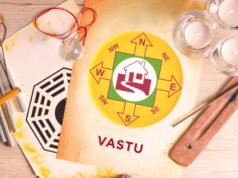Introduction:
Tapestry art is a weaving art that has a long history. It is a living Art and to see a tapestry up close is to experience the hands in nature. The history and its art reached new heights in France in the 17th century, when France King Louis set up the Royal Tapestry Manufactory at the Gobelins, a place that still exists today in Paris. There, traditions still inform the making of contemporary art. Knowledge and creative inspiration handed down, at the same site of Gobelins.
tapestry
The early art of making the tapestry may seem anachronistic in the world at present when everything has to do with speed. But the weaving of tapestry takes the time to do with humanity and soul. And the designing of a tapestry started with a single artist, who often planned the entire series and might have delivered early sketches of tapestry. Other draftsmen honed the design of tapestry in the early period. Today, similarly, a contemporary artist creates an original work with tapestry in mind. But it is the weaver of the tapestry, who interprets it, which makes the weaver need to like drawing, above all. That makes a weaver to have a lot of imagination and be creative.
foolproof art on tapestry
From a just draft of the artist’s work, the weaver draws some essential lines onto strips of clear plastic and these are positioned at the back of the loom’s vertical warp threads and the lines are redrawn. The markings and ink will serve as the visual guide for weaving. Next, the color palette is decided and threads will be custom-dyed to match the tapestry’s design so as to give foolproof art on tapestry.
The colored threads
The colored and textured threads of a tapestry form the weft and the 17th century tapestries were made of wool for strength, silk for luminosity, and silver or gold thread for showing the patron’s wealth. Whatever may be the cloth the weft must be dyed to have a color. And this requires a very good expert. For many years, dyes came from minerals, rocks, insects made into powder and the process of using them is challenging as the temperatures for dye baths were tough to keep them constant. Now, chemical dyes are used and infinite hues are possible using just red, blue, and yellow that are carefully measured out.
Preparing a loom
In the 17th century, the production of large tapestries required huge looms of both horizontal and vertical types. Now, it is the vertical loom that is mostly used. Thick strands of undyed wool called the wrap form the structure of a tapestry and on a vertical loom they are clearly noticeable. Before weaving begins, the loom is bare. The warp should be prepared in accordance with the tapestry’s instructions.
A single continuous thread is wound between a metal wheel to form a loop. After a set number of loops around the metal loop the process is repeated with a new warp thread. Each bundle of wrap is braided and at the empty loom the braided threads are arranged, perfectly spaced across a wooden bar with metal teeth. Then this bar is hoisted up and suspended from the loom’s top beam. Then the next step is to add tension, once the warp is on the loom. And then the weaving process begins, once the perfect tension is reached.
Weaving
The weaver’s role is to do everything from beginning to the end of the tapestry. A weaver sits behind the loom, facing at the back of the tapestry. As the weaver work, the person occasionally looks between the warp thread to see the front of the tapestry reflected in a mirror. The person also sees the reflection of the cartoon, a copy of the design being woven.
weaver’s broche
The weaver’s broche is used like a needle to hold weft and guide it between the warp thread. To make a tapestry, the weft is woven over and under the warp threads and eventually, the warp will be completely covered by weft. The weaver’s skill and experience enable the person to accomplish not only a complex design but to create a textile that is structurally sound.A tapestry might take years to complete even today. A finished tapestry is a celebration, honoring the work of art and people who created it with great skill. Learn about tweakvip and Olivia lubis Jensen
traditional weaving
Apart from the traditional weaving, the tapestry nowadays is also made with just using dye on a white sheet. For this, one uses tie dye method, which is done with the help of sinew News. Then the wet sheet is hung to dry completely, giving it a perfect contemporary tapestry with an amazing look











